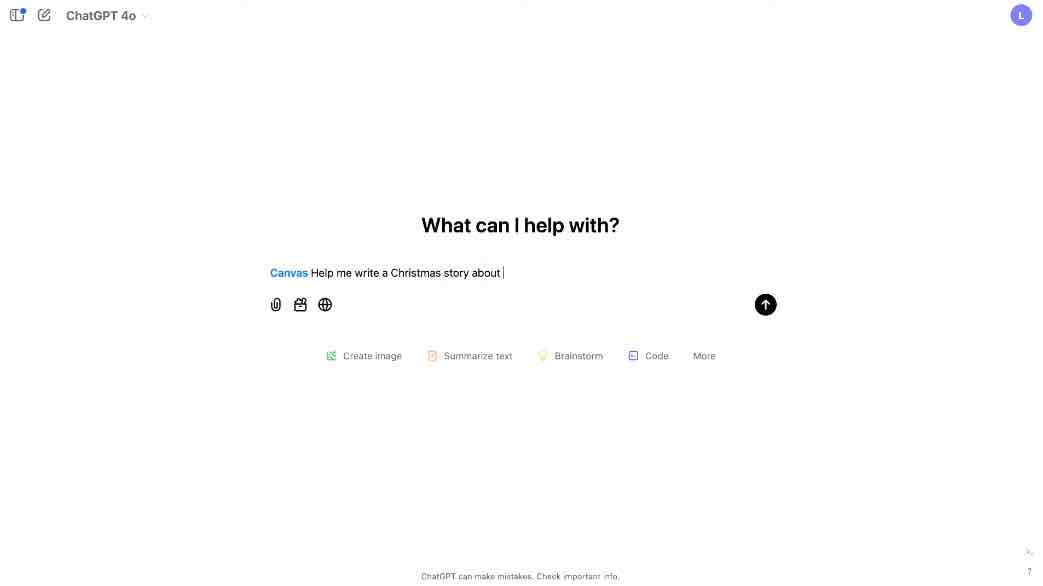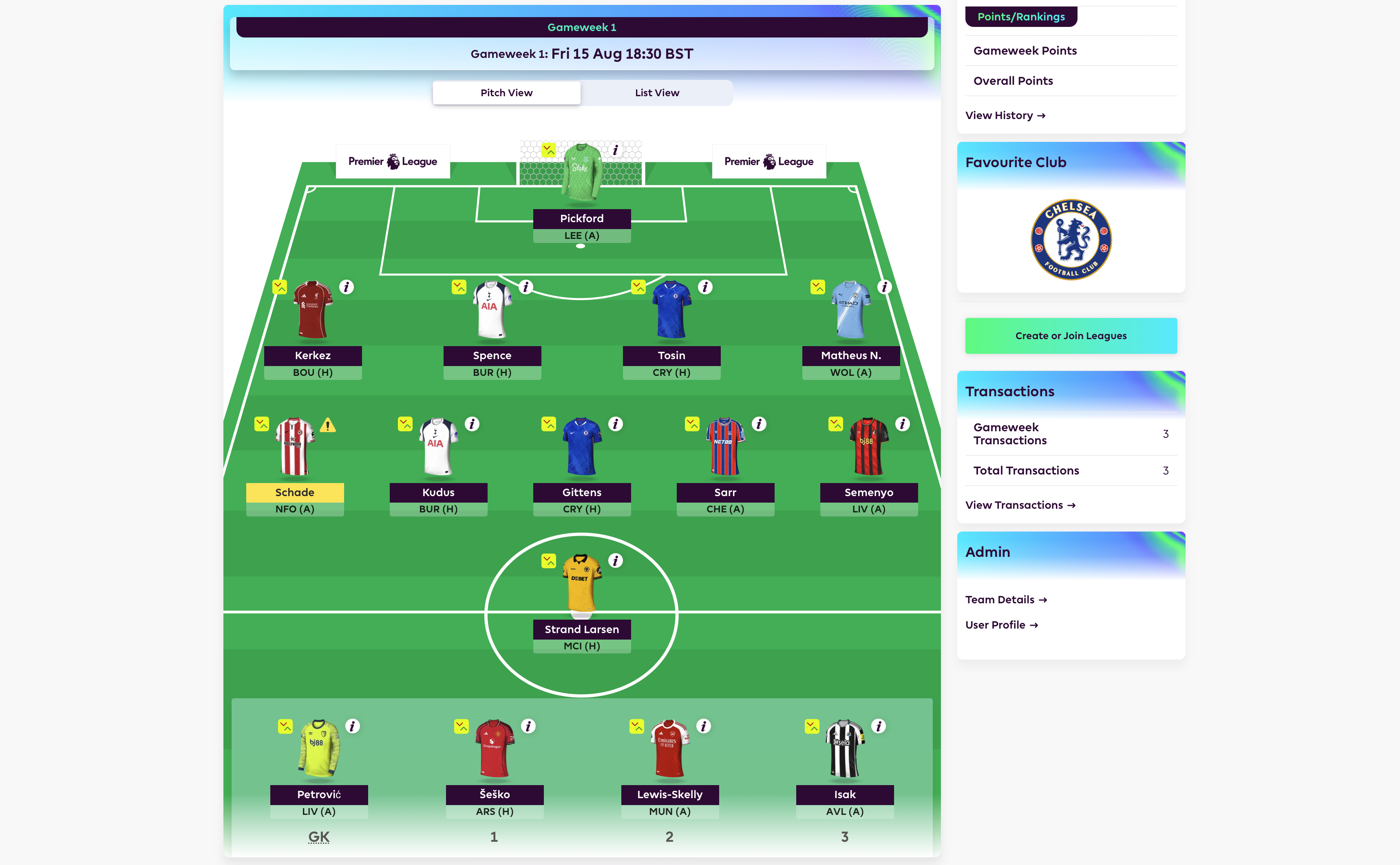I used GPT-5 to code a Fantasy Premier League program, and I might actually stand a chance of winning my draft this year thanks to ChatGPT
No coding? No problem

With the start of the Premier League season fast approaching, my annual Fantasy Premier League draft was on the horizon.
I've been playing this alternate version of more traditional fantasy football (soccer) for seven years, but this time round, my preparation was more chaotic than usual.
I had a spreadsheet of my top 200 players, position tiers in another tab, and a mental list of “don’t forget” picks that I knew I’d definitely forget – but for the first time in my seven-year Fantasy Premier League Draft career, I hadn't followed off-season transfer news, and with my draft just days away, I was panicking.
Eight managers, 15 picks each, snake draft format, chaos was coming. Then it hit me: what if I could build my own draft program?
There was just one problem: I don’t know how to code.
My AI assistant coach
You probably read that intro and thought to yourself, what even is Fantasy Premier League Draft? And to be honest, I wouldn't blame you. The Premier League, the world's most popular club football competition, plays host to one of the most popular online fantasy games around: Official Fantasy Premier League.
Millions of players select their favorite footballers before the start of the season and compete against friends based on the athletes' real-world performance. The issue with this game mode is that everyone owns the same players, and more often than not, friends will lose interest a couple of months into the season, rendering it all a little frustrating and a bit, dare I say it, boring.
Sign up for breaking news, reviews, opinion, top tech deals, and more.
Nestled into a menu on the same website is the far less popular Draft version of Fantasy Premier League, similar to US fantasy football. This offers users the chance to select players pre-season and to be the only one in the league to "own" them. So there's only one Mohammed Salah, one Erling Haaland, and ultimately one winner.
If you've ever competed in a live fantasy draft, you know the pain. Someone picks a player, you scramble to cross them off your list, and by the time you're ready, your 90-second turn is already underway and you're in danger of missing out on a bargain.
Existing tools to make my life easier and help me grab the right players were either locked behind subscriptions, weren't simple enough for what I wanted, or were just completely unavailable. So I needed to find a solution – and what better way than to try the new OpenAI model, GPT-5.
ChatGPT Canvas

I had never "vibe coded" with ChatGPT before; in fact, I had never coded at all in my life. But after Sam Altman and co's GPT-5 presentation, I thought it was the perfect time to test the new powers of the latest AI model.
My first prompt was basically a wish list:
“Make me an interactive web program where I can click on a player’s name to mark them as picked, colour-code by position, and track picks for eight teams in a snake draft.”
It worked, albeit in a pretty basic way, so I continued to chat with ChatGPT to refine the concept and make a program that was not only nice to look at but also efficient for the task at hand.
I asked ChatGPT to add color coding to each individual position, to import the data with my 200 ranked players from the Google Sheet I had created the night prior, and even display team crests next to each athlete.
Each time I asked the AI to make an adjustment, it went away and changed the code right in front of my eyes. Considering I had never even attempted 'coding' before, I was seriously impressed with how simple it all was.
Fast forward 40 minutes, and I had a fully functional Fantasy Premier League Draft program that I could use to track the live draft and tick off players from my wishlist as other users selected them.
Draft day and beyond
Draft day came and went, and thanks to ChatGPT, I didn't panic when the 90-second selection timer popped up on screen. Every time it was my turn to select a player, I had the whole list of available ones cross-checked with my rankings right in front of my eyes.
This was a revelation for me; this simple program – that I created simply by explaining the problem – was able to solve an issue that had plagued the seven years I've played this slightly niche game, and I was over the moon.
ChatGPT doesn't have a magic “build exactly what I am picturing” button; you still need to be precise with instructions and to test the results. But it is surprisingly capable of turning a non-coder’s idea into something usable within hours.
For me, the real win was not just that I had a draft tool tailored to my league, it was the realization that I can now build things I used to think were out of reach.
While this article has been focused on fantasy football, it's only an example of the powers of AI if you can describe what you need from it. GPT-5 might not be the best AI for coding and I'll need to try other models now to see what the competition is capable of – but AI in general has the prowess to bring ideas to life. And I think that's pretty magical.
The Premier League season starts this weekend, so let's hope my draft day decisions were good ones. After all, I still think I'm more knowledgeable about sport than ChatGPT.
You might also like

John-Anthony Disotto is TechRadar's Senior Writer, AI, bringing you the latest news on, and comprehensive coverage of, tech's biggest buzzword. An expert on all things Apple, he was previously iMore's How To Editor, and has a monthly column in MacFormat. John-Anthony has used the Apple ecosystem for over a decade, and is an award-winning journalist with years of experience in editorial.
You must confirm your public display name before commenting
Please logout and then login again, you will then be prompted to enter your display name.

